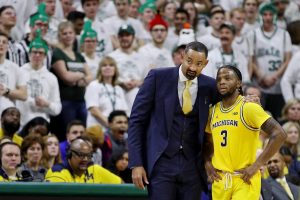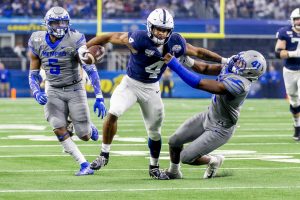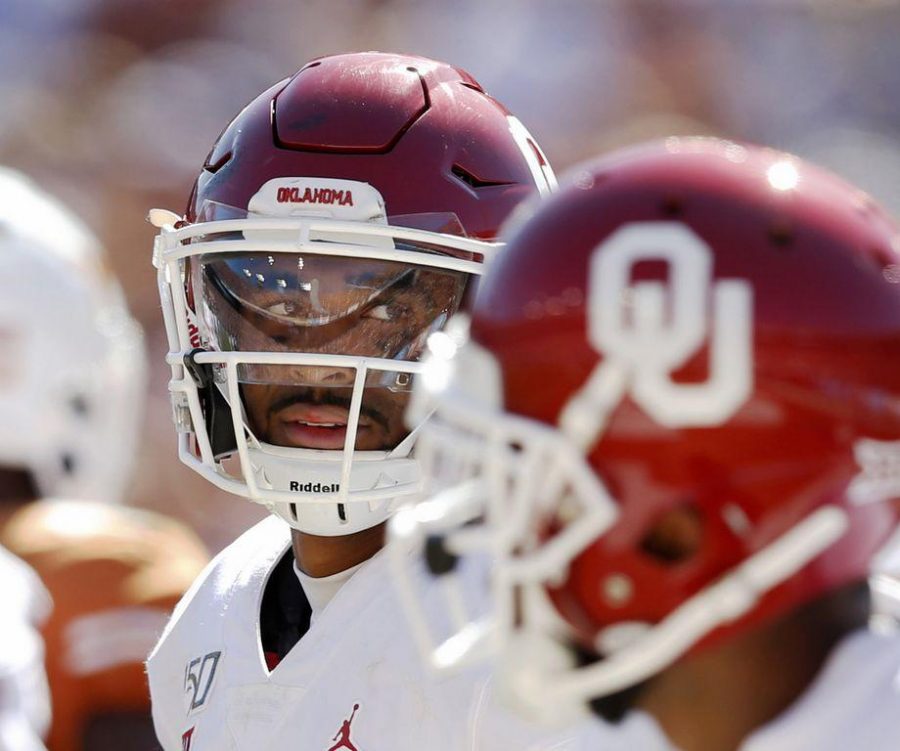Student-Athletes: Students First
Paying college athletes is a slippery slope and not financially sensible.
PHOTO | TNS
Oklahoma quarterback Jalen Hurts looks after scoring a touchdown during the second half against Texas in the Red River Showdown at the Cotton Bowl in Dallas on Saturday, Oct. 12, 2019. Oklahoma won, 34-27. (Vernon Bryant/Dallas Morning News/TNS)
When it comes to athletics, not all colleges are created equal. Though it’s not a secret that colleges can bring in hundreds of millions of dollars from their Division I sports, that is not the case with all colleges. Though some, such as Texas A&M, which makes the most off college athletics, can make up to $200 million, almost half of other Divison I schools make less than $20 million in revenue, according to an investigation of 231 schools by Business Insider.
A former Villanova football player, Ralph Johnson, sued the National Collegiate Athletic Association for not paying student-athletes, arguing that they were employees who work to bring in revenue for the college they play for and asked to be paid minimum wage.

Related media: Text
Michigan coach Juwan Howard talks with guard Zavier Simpson (3) in the second half of their college basketball game against Michigan State at the Breslin Center in East Lansing. Michigan State won the game, 87-69.
It may seem simple to ask a college gaining almost $200 million to pay the athletes that earned them that, it’s much different to ask a college making less than $20 million off their athletics to pay their athletes. There are also more costs involved in athletics that are often ignored in this debate such as coaches’ salaries and upkeeping sports facilities. The Knight Commission found that many schools actually lose money on sports, being forced to fill in financial gaps with revenue from state taxpayers and tuition dollars. Paying college athletes is not financially possible for many schools, especially when they receive a large scholarship averaging $18,000, according to the NCAA.
Paying athletes seems simple in the sense of only paying the big ones who bring in lots of revenue- mainly men’s basketball and football- but there are many more sports that are forgotten in that, including women’s sports which bring nowhere near the amount of revenue that men’s sports do. The NCAA lists 24 sports that students can play in college. If big-revenue sports are to be paid, then the rest, lower-earning sports must be, too, which is not a reasonable ask for most colleges.
If college athletes are to be paid because they bring can potentially bring in so much money for schools, then thousands of other students who bring in money should be paid too, including journalists, those who participate in theatre and leaders of student organizations that bring in revenue. It is a slippery slope.

Penn State running back Journey Brown stiff arms Memphis defensive back Sanchez Blake Jr. as he goes 32 yards for a touchdown during the first quarter of the 84th Cotton Bowl in AT&T Stadium,
The reason why the NCAA rule about not paying college athletes is in place is that money is one of the only factors that distinguish professional athletes from college athletes, according to NCAA. Less than two percent of college athletes go pro, according to NCAA, meaning that most college athletes will “go pro” in something other than sports. In addition, eighty percent of retired National Football League players go broke within three tears of retirement, according to Sports Illustrated. For these reasons, colleges should emphasize academics by continuing to pay in scholarships so the majority of athletes who do not go pro have education to fall back on.
Student-athletes are students first, athletes after. With so many scholarships, sponsorships and education opportunities, their work on the field pays for itself.



